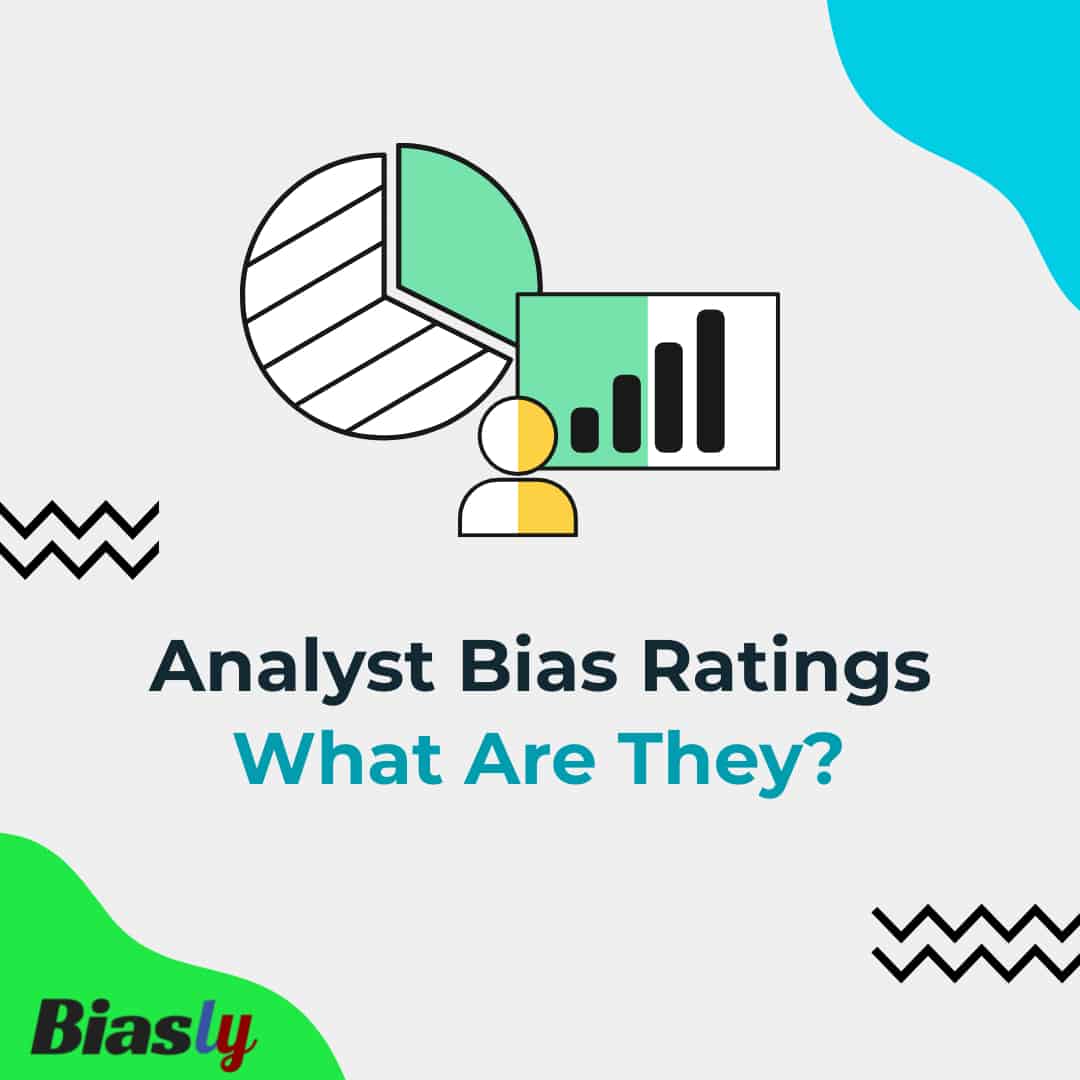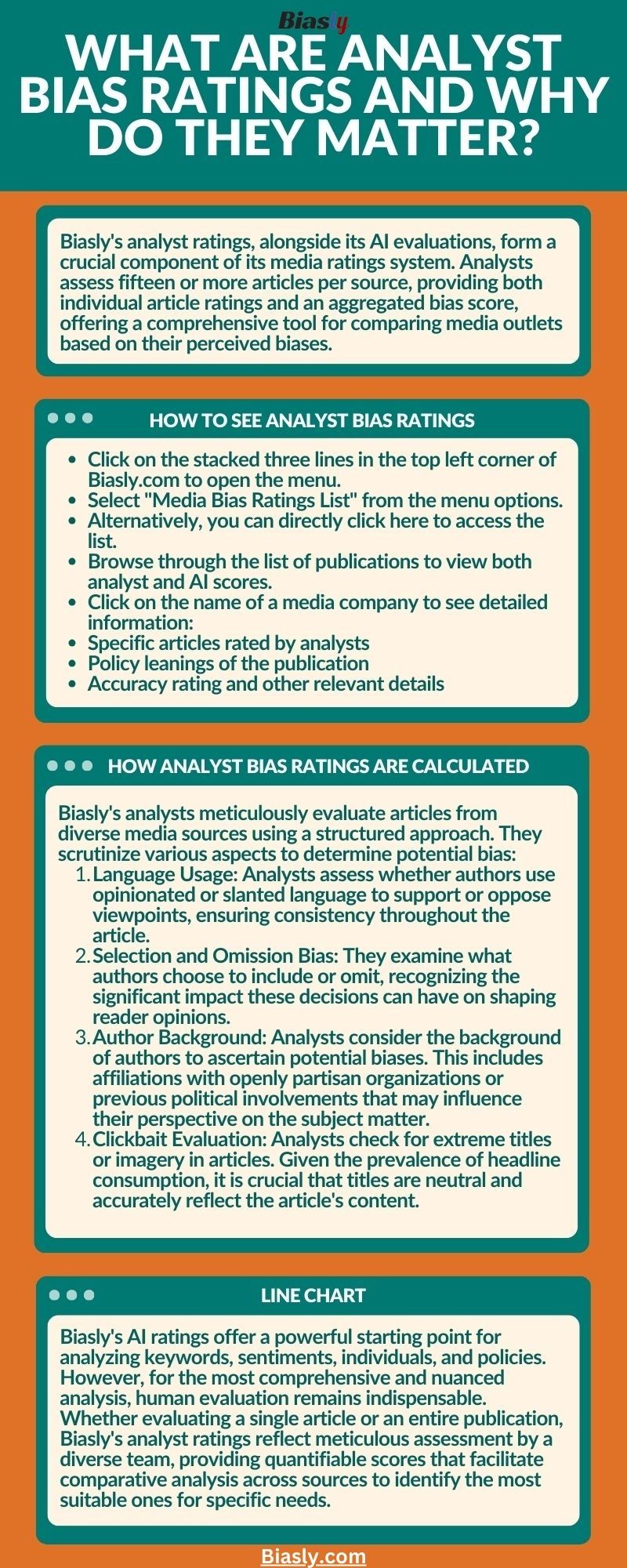
One of the core components of Biasly’s media ratings, in addition to its artificial intelligence evaluations, is its analyst ratings. Biasly’s analysts review fifteen or more articles for each news source that it covers. These article ratings can be viewed individually, and they are also averaged into a composite, overall bias rating. Biasly does not yet have an analyst rating for every source (only A.I. ratings), but it does have them for almost every major outlet.
Anyone interested in evaluating bias should seek to compare media sources using frameworks and tools such as Biasly’s analyst rating scores. It is important to understand how Biasly’s analyst ratings are found and what their value is.
How to See Analyst Bias Ratings
How can you view the analyst ratings? You can find analyst ratings by clicking on the stacked three lines in the top left corner of Biasly.com to open the menu. Click on Media Bias Ratings List. Alternatively, you can click here to see the list. Once there, you can see a list of publications and their analyst and A.I. scores. At the time of writing this, the first publication in the list that has an analyst bias score is ABC News. If you click on the name of a media company you will be able to see additional information, including the specific articles analysts have rated, the policy leanings of a publication, and an accuracy rating.

How Analyst Bias Ratings are Calculated
Biasly collects random assortments of dozens of articles from hundreds of different media sources. These articles are passed on to analysts who rate them on several different metrics according to a numerical scale. After that, articles are reviewed by someone with different political perspectives to ensure analysts do not mistake content that affirms their own views as bias-free.
Here is a brief summary of some of the points Biasly’s Analysts consider:
- The Use of Language: This covers the author’s use of opinionated or slanted language to affirm or reject a certain viewpoint and its consistency.
- Selection and Omission Bias: What an author chooses to include or not include can profoundly impact how an article influences one’s opinions.
- Authorship: Analysts consider whether or not an author has a background that could lead them to take a biased perspective. This could include being associated with an openly partisan think tank or having run for office against the person or party the article is about.
- Clickbait: Does the article have extreme titles or imagery? In an era where it is common just to read headlines, it is critical that they are neutral and relevant to an article’s content.
The Value of Analyst Ratings
Biasly’s A.I. ratings are a phenomenal starting point for analyzing keywords, sentiments, people, and policies. However, the most comprehensive and nuanced analysis is still best done by humans. Whether looking at a rating for an individual article, or a publication as a whole, you are looking at the results of thoughtful analysis from a diverse Biasly team.
One of the most valuable qualities of the company’s analyst ratings is that they combine the multitude of factors discussed above into a quantifiable score. It can be difficult to analyze a media site and compare it to others when their biases might take different forms. Analyst ratings circumvent this issue by putting everything on the same scale and allowing you to see how sources stack up against each other to find the best ones that fit your needs.
























